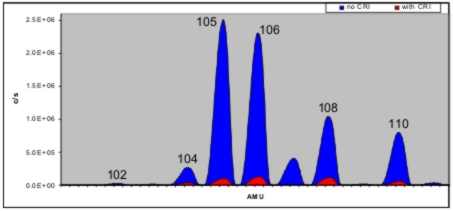|
|
Molecule of the Month August 2006 |
|
| Measurement of Pd in Environmental Samples by ICP-MS | ||

|
||
|
In recent years the air quality in the vicinity of motorways has improved due to the distinct reduction of hazardous car emissions such as VOC, CO and NOx thanks to the introduction of catalytic converters for exhaust gas. The investigation on the distribution and speciation o PGE (Platinum group elements) is of central interest, since the operation of any car equipped with catalytic converters lead to the emission of Pt, Pd and Rh in nanogram quantities per each km driven. The measurement of Pd in environmental samples by ICP-MS suffers from molecular interferences e.g. by Sr, Y, Mo and Zr with O and N. The new Varian 820 ICP-MS equipped with a CRI (collision reaction interface) allows reducing these sorts of interferences by two to three orders of magnitudes.
This work was carried out by Kaizhen Li, Meena Zala and Christian Stenger in the group of Prof. Urs Krähenbühl. References: |
||